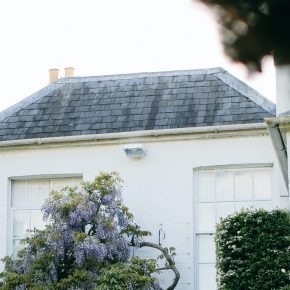
What are Roof Membranes?
Among the most important parts of your home is the roof overhead. Without a roof that functions well, the underlying building will rapidly deteriorate, and even become uninhabitable. Roof membranes play an important role in excluding water and ensuring the rest of the structure has protection. But exactly how are they made, and what function do they serve?
What makes a roof?
The average home in the UK has a pitched roof comprising several different components. Everything is built around a skeletal frame, usually made from timber. On top of this is placed a series of interlocking tiles, which distribute rainwater down into the guttering.
Beneath this is a waterproof roof membrane for added protection – a sheet of plastic acting as a barrier between the air inside the roof and the air outside.

What is a Roof Membrane?
Roof membranes come in several different types. There are breathable membranes and non-breathable ones. The former is favourable in most settings, as there is a perception that they eliminate the need for separate ventilation elsewhere. This is not always entirely accurate, and it’s still often necessary to include additional ventilation around the ridge and eaves.
The most breathable types of membrane today are ‘air open’ and ‘vapour permeable’. These represent the cutting edge when it comes to breathability, and are a result of extensive R&D on the part of the manufacturers. They’re especially useful in complex roofs, such as those found in extensions, skylight-equipped loft conversions, and heavily partitioned apartment buildings where there are many breaks in the roof, and reduced opportunity for ventilation.
Up to date guidelines can be found in British Standard BS 5250, which deals with the control of condensation in buildings.
How does a Roof Membrane Work?
The membrane’s job is to exclude external moisture from the underlying structure. While rainwater might not be able to directly pass through the tiles and into the roof, airborne droplets can find their way through. The membrane is placed on the ‘cold’ side of the insulation, and will allow moisture to pass from the inside to the outside, and still allow air to circulate below, limiting the likelihood of damp and other moisture-related problems.
How long do they last?
If a membrane doesn’t incur direct damage, it should last for several decades with minimal maintenance. It is, after all, just a large sheet of plastic. Therefore, it’s important to ensure the right sort of membrane is chosen at the outset.
Latest news

11th April 2025
Don’t Do a Dave! It’s Time to Lock FIT Show 2025 in Your Calendar!
It’s that time again – FIT Show is back! You could be forgiven for thinking there won’t be much new to see when FIT Show returns to the NEC from 29 April – 1 May. Wrong!
Posted in Articles, Building Industry Events, Building Industry News, Building Products & Structures, Building Services, Continuing Professional Development (CPD's), Exhibitions and Conferences, Information Technology, Innovations & New Products, Restoration & Refurbishment, Retrofit & Renovation, Seminars, Training
11th April 2025
Insight Data: Boost construction success with project and prospect data
For those working in construction – in whatever capacity – the last few years haven’t been much fun. And according to the latest statistics, it would seem the challenges are continuing – Alex Tremlett, Insight Data’s Commercial Director, has more…
Posted in Articles, Building Industry News, Building Services, Information Technology, news, Research & Materials Testing
11th April 2025
ASSA ABLOY EMEIA: Learn how to tackle the security challenges of digitalising access with insights from industry experts
In a new series of videos, experts in various specialisms within ASSA ABLOY share their expertise on digital access, including the complexities to overcome and the range of benefits for those who get digital access right…
Posted in Access Control & Door Entry Systems, Architectural Ironmongery, Articles, Building Industry News, Building Products & Structures, Building Services, Doors, Facility Management & Building Services, Information Technology, Innovations & New Products, Posts, Restoration & Refurbishment, Retrofit & Renovation, Security and Fire Protection, Videos
10th April 2025
Geberit completes 150 Acts of Kindness
Geberit has raised nearly £14,000 for various charities through its ‘150 Acts of Kindness’ initiative, a year-long programme of fundraising and volunteering to mark the company’s 150th anniversary in 2024.
Posted in Articles, Bathrooms & Toilets, Bathrooms, Bedrooms & Washrooms, Building Industry Events, Building Industry News, Building Products & Structures, Building Services, Charity work, Drainage, Interiors, Pipes, Pipes & Fittings, Plumbing, Restoration & Refurbishment, Retrofit & Renovation
 Sign up:
Sign up: